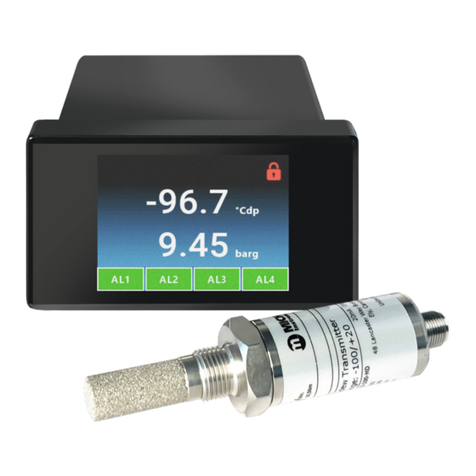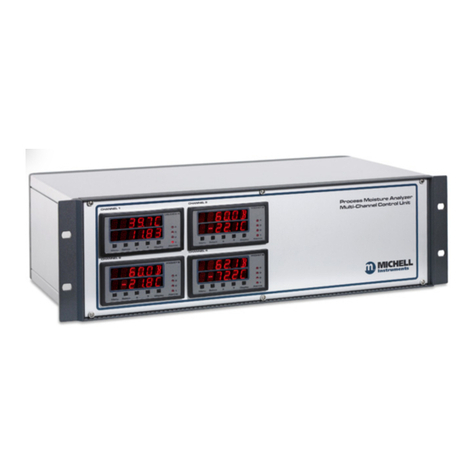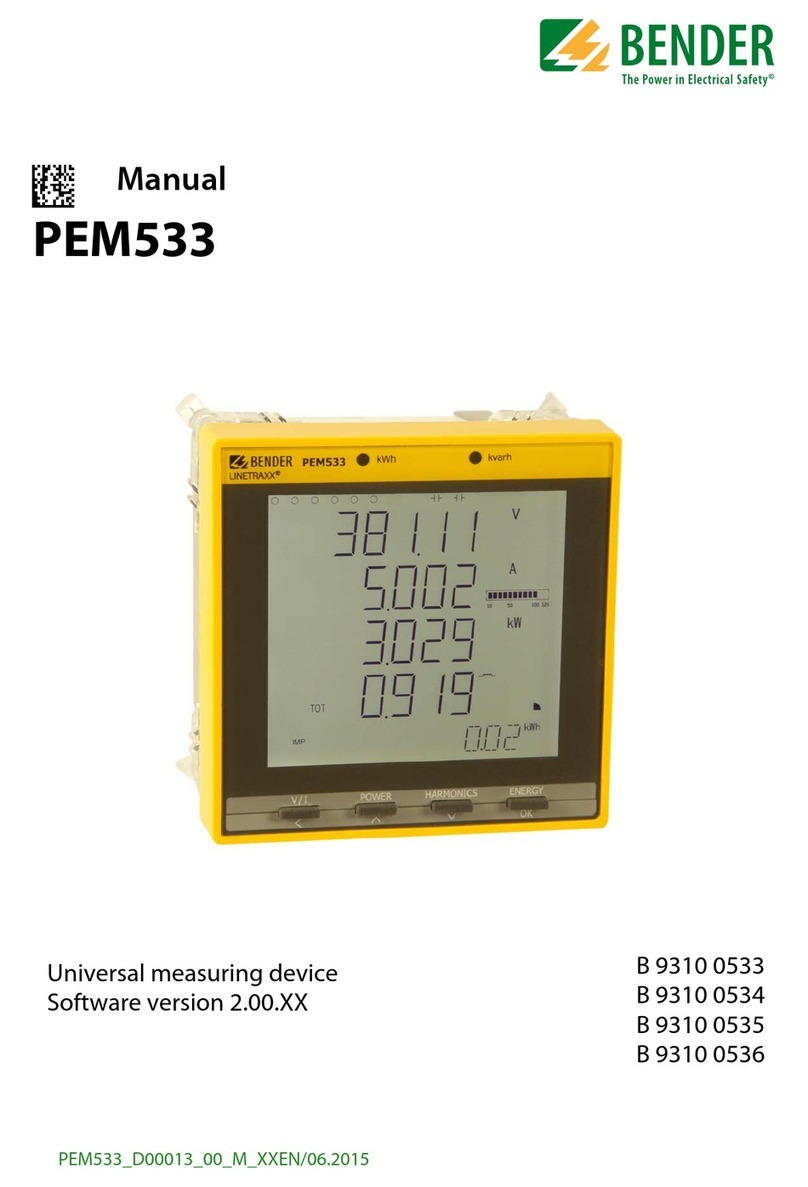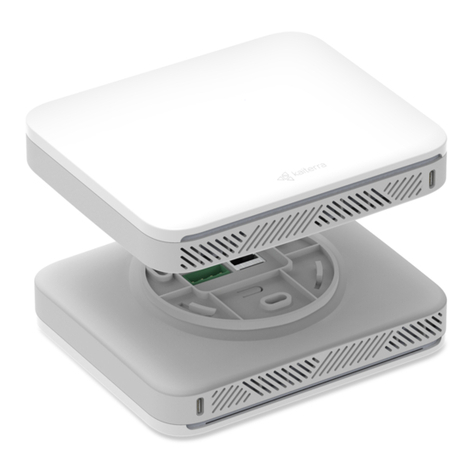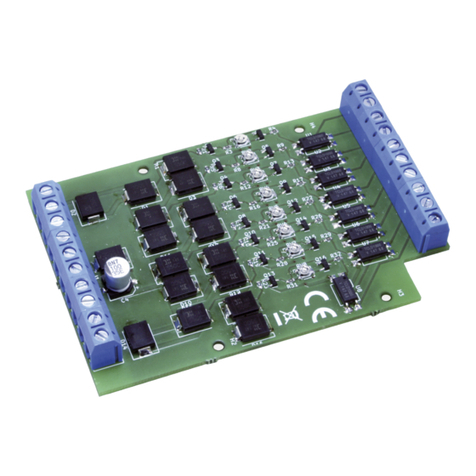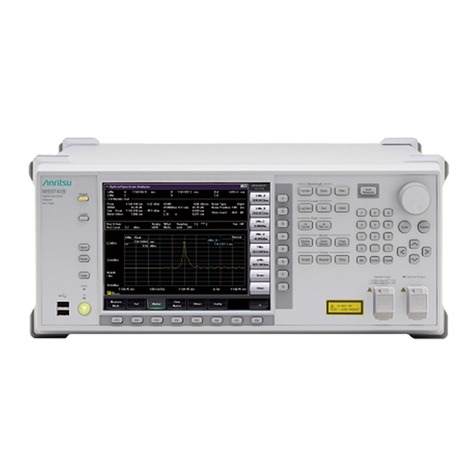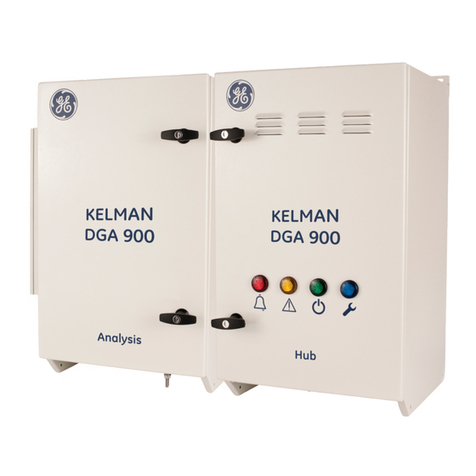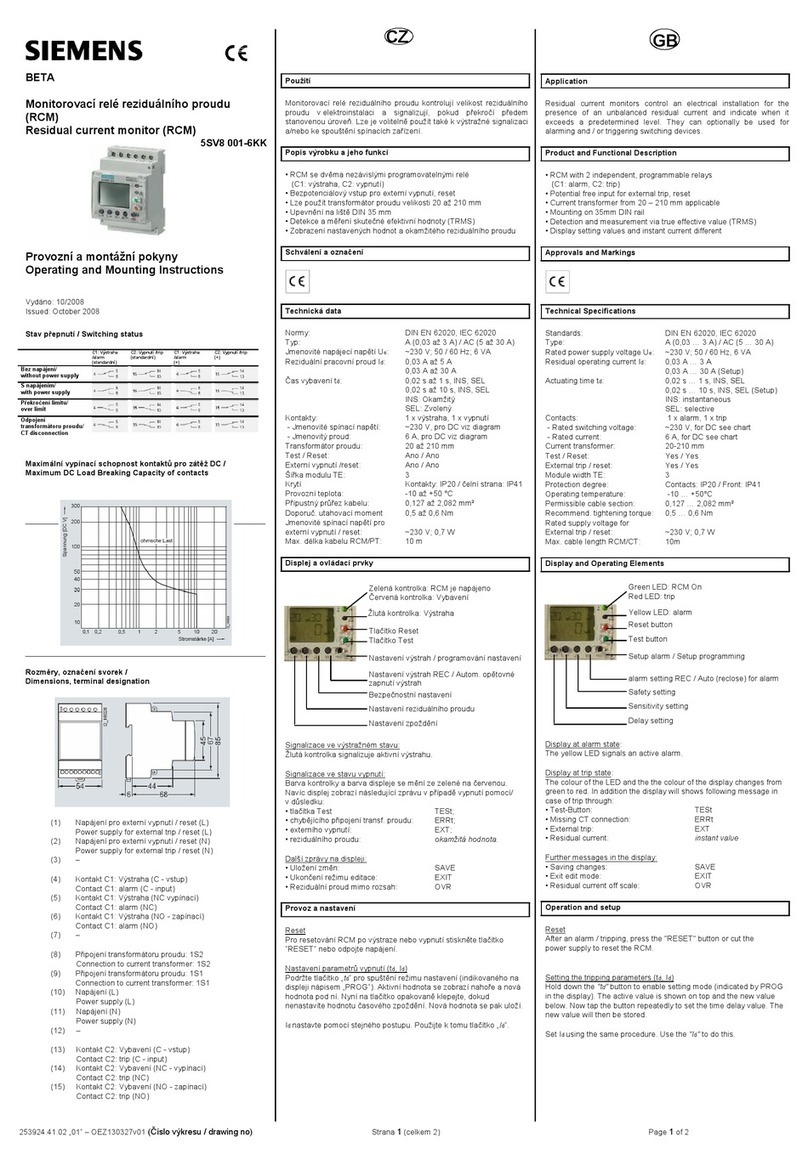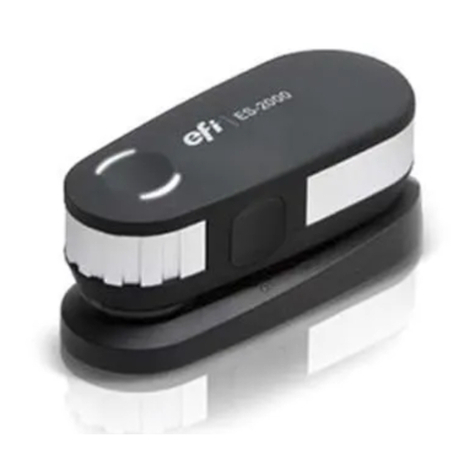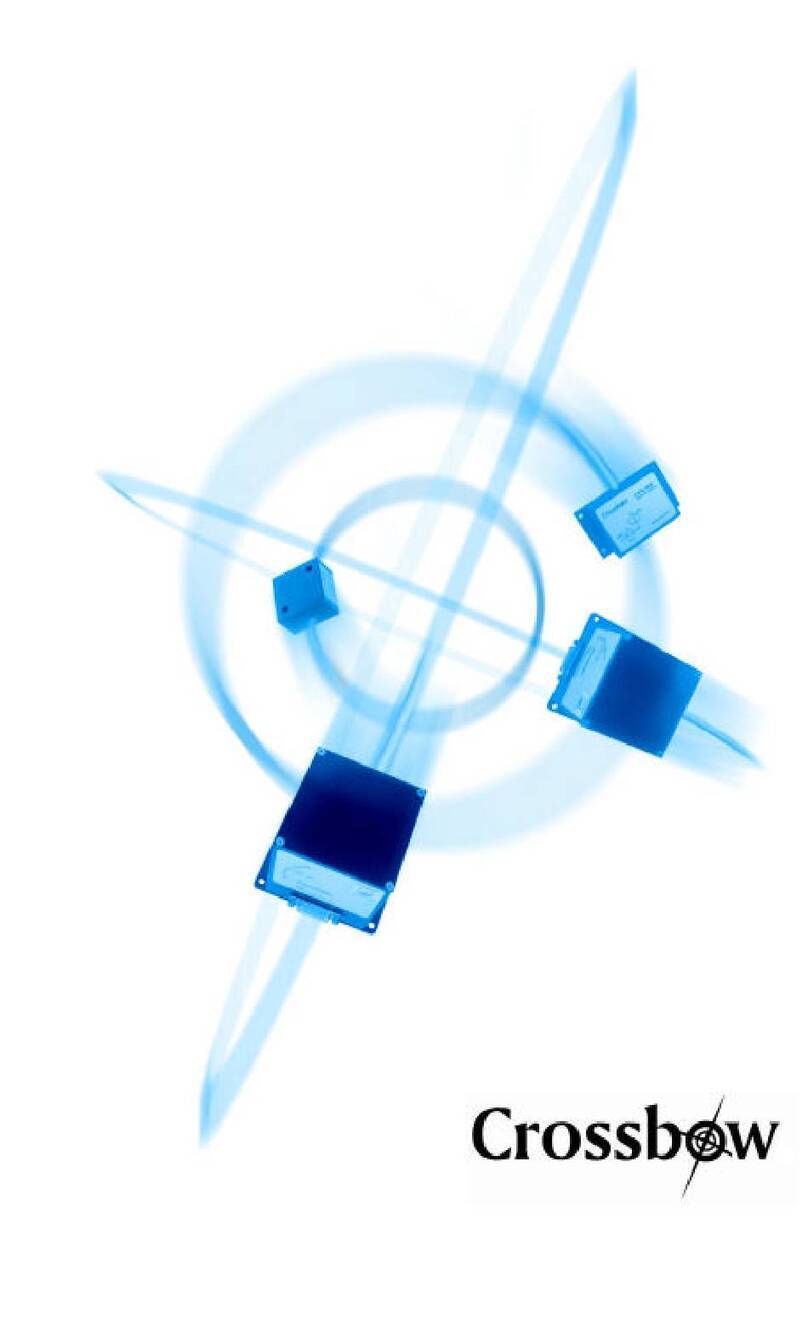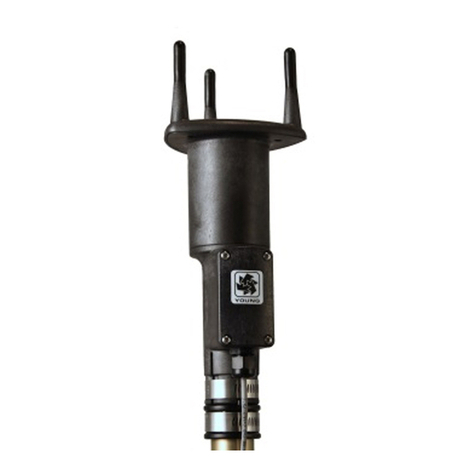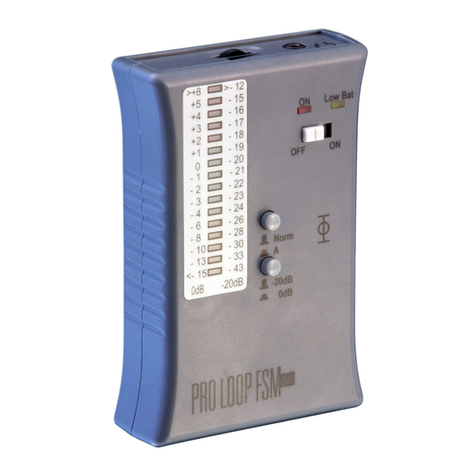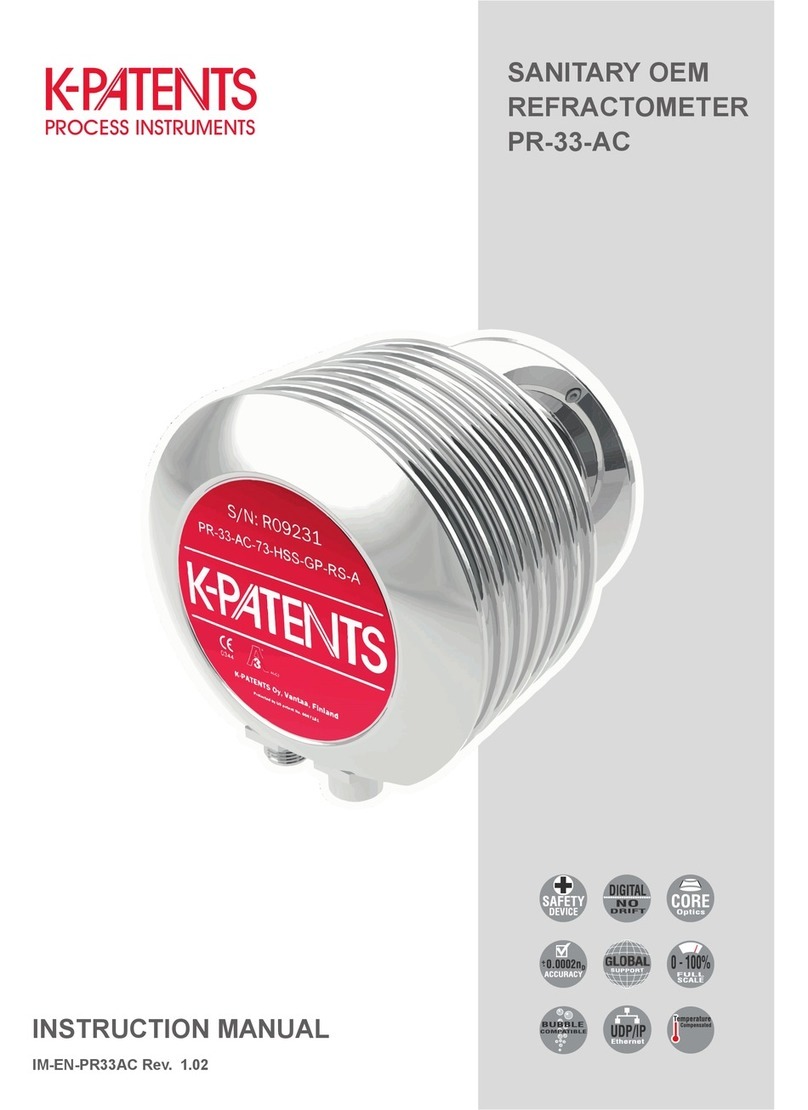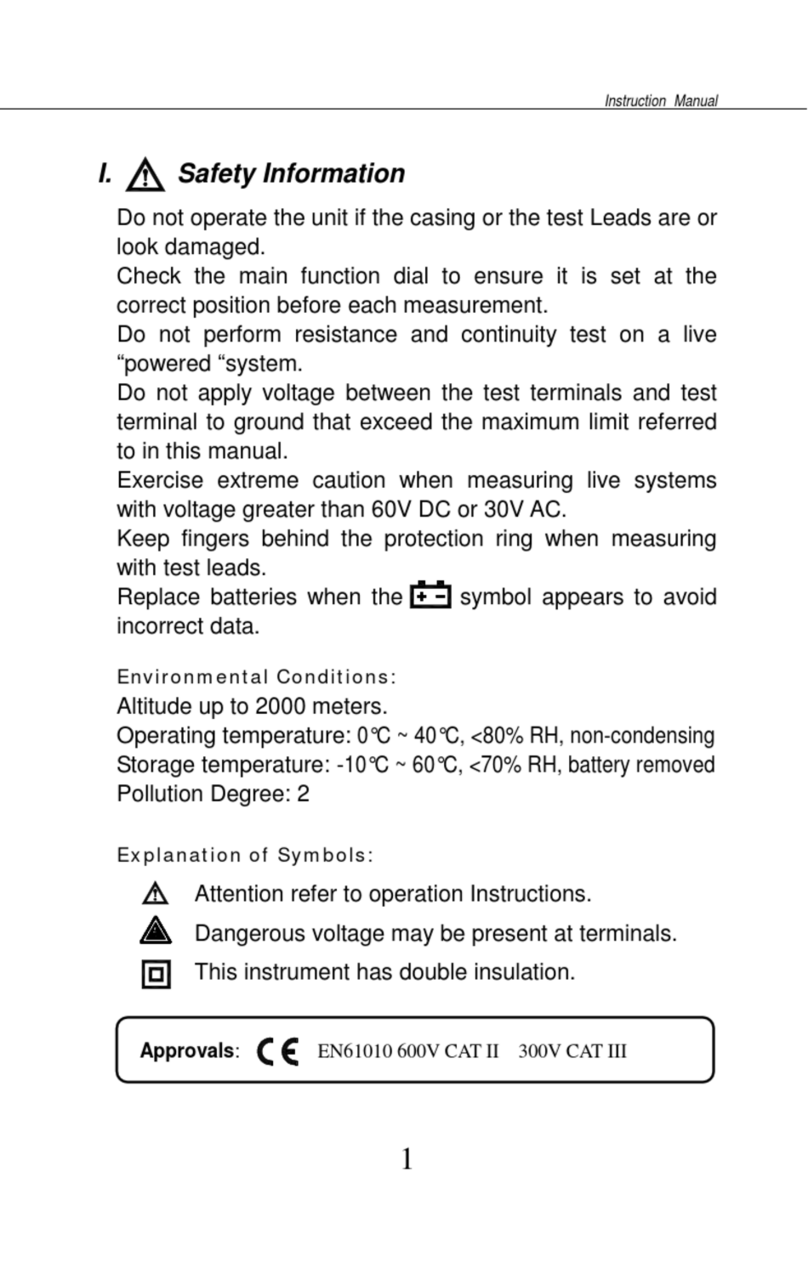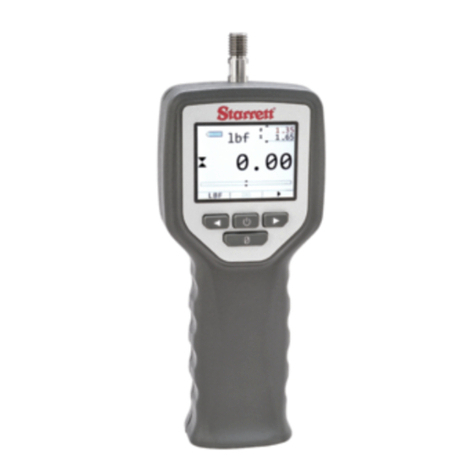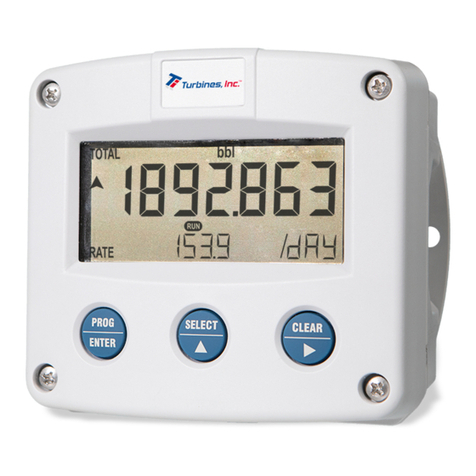PST MA886 User manual

INSTRUCTION MANUAL
SATISFACTION
GUARANTEED
MA886
Digital Sodium Chloride
Refractometer

All rights are reserved. Reproduction in whole or in part is
prohibited without the written consent of the copyright owner,
Milwaukee Instruments Inc., Rocky Mount, NC27804USA.
THANK YOU for choosing Milwaukee Instruments!
This instruction manual will provide you the necessary
information for correct use of the meters.

3
TABLE OF CONTENTS
1. FUNCTIONAL DESCRIPTION.................................................................................5
2. GENERAL DESCRIPTION.........................................................................................7
3. SPECIFICATIONS........................................................................................................8
4. PRINCIPLE OF OPERATION...................................................................................9
5. MEASUREMENT GUIDELINES.............................................................................11
6. CALIBRATION PROCEDURE.................................................................................12
7. MEASUREMENT PROCEDURE............................................................................ 14
8. CHANGING MEASUREMENT UNIT.................................................................. 16
9. CHANGING TEMPERATURE UNIT.....................................................................17
10. MAKING A STANDARD SODIUM CHLORIDE SOLUTION..................... 18
11. ERROR MESSAGES ................................................................................................ 19
12. BATTERY REPLACEMENT ...................................................................................21
CERTIFICATION..............................................................................................................22
RECOMMENDATION....................................................................................................22
WARRANTY......................................................................................................................22

4MA886 Digital Sodium Chloride Refractometer
Remove the instrument from the packing materials and examine
carefully to ensure no damage has occurred during shipping. If
any damage has occurred, notify your Dealer.
Each instrument is supplied with:
y9 V battery
yInstruction manual
Note: Save all packing material until you are sure that the
instrument functions correctly. A defective instrument must be
returned in its original packing.

FUNCTIONAL DESCRIPTION 5
1. FUNCTIONAL DESCRIPTION
DISPLAY
A. BATTERY STATUS ICON
(BLINKS WHEN LOW BATTERY CONDITION DETECTED)
B. MEASUREMENT IN PROGRESS TAG
C. SETUP: FACTORY CALIBRATION TAG
D. CAL: CALIBRATION TAG
E. AUTOMATIC TEMPERATURE COMPENSATION
(BLINKS WHEN TEMPERATURE EXCEEDS 10-40 °C / 50-104 °F
RANGE)
F. PRIMARY DISPLAY
(DISPLAYS MEASUREMENT AND ERROR MESSAGES)
G. TEMPERATURE UNITS
H. SECONDARY DISPLAY
(DISPLAYS TEMPERATURE MEASUREMENTS;
WHEN BLINKING, TEMPERATURE HAS EXCEEDED OPERATION
RANGE: 0-80 °C / 32-176 °F)
I. RANGE INDICATOR

6MA886 Digital Sodium Chloride Refractometer
FRONT PANEL
MA886
Digital Sodium Chloride
Refractometer
1 g/100 g
2 g/100 mL
3 S.G. (20/20)
4 Baumé
A H G F
B C ED
A. LIQUID CRYSTAL DISPLAY (LCD)
B. READ KEY (USER MEASUREMENT)
C. ZERO KEY (USER CALIBRATION)
D. RANGE KEY (USER MEASUREMENT UNIT)
E. ON/OFF
F. STAINLESS STEEL SAMPLE WELL AND PRISM
G. SECONDARY DISPLAY
H. PRIMARY DISPLAY
BOTTOM
I
J
I. BATTERY COVER
J. BATTERY COMPARTMENT

GENERAL DESCRIPTION 7
2. GENERAL DESCRIPTION
SIGNIFICANCE OF USE
Thank you for choosing Milwaukee. This instruction manual will
provide you the necessary information for correct use of the meter.
TheMA886 isan optical instrumentthat employs themeasurement
of the refractive index to determine sodium chloride concentration
in aqueous solutions used in food preparation. It is not intended
for sea water salinity measurements. The measurement of
refractive index is simple and quick and provides the user an
accepted method for NaCl analysis. Samples are measured
after a simple user calibration with deionized or distilled water.
Within seconds the instrument measures the refractive index of
the solution. The digital refractometer eliminates the uncertainty
associated with mechanical refractometers and is easily portable
for measurements where you need them.
The instrument utilizes internationally recognized references for
unit conversion and temperature compensation. It can display
the measurement of NaCl concentration 4 dierent ways: g/100 g,
g/100 mL, Specific Gravity, and °Baumé.
Temperature (in °C or °F) is displayed simultaneously with the
measurement (on 3 of the ranges) on the large dual level display
along with icons for Low Power and other helpful message codes.
Key features include:
yWaterproof models oers IP65 waterproof protection
yAutomatic Temperature Compensation (ATC)
yBattery operation with Low Power indicator
yAutomatically turns o after 3 minutes of non-use.

8MA886 Digital Sodium Chloride Refractometer
3. SPECIFICATIONS
g/100 g g/100 mL Specific
Gravity °Baumé °C (°F)
Range: 0 to 28 0 to 34 1.000 to 1.216 0 to 26 0 to 80 °C
(32 to 176 °F)
Resolution: 0.1 0.1 0.001 0.1 0.1 °C
(0.1 °F)
Accuracy: ±0.2 ±0.2 ±0.002 ±0.2 ±0.3 °C
(±0.5 °F)
Light Source Yellow LED
Measurement Time Approximately 1.5 seconds
Minimum Sample Volume 100 µL (cover prism totally)
Sample Cell Stainless Steel ring and flint glass prism
Temperature
Compensation Automatic between 10 and 40 °C (50 to 104 °F)
Case Material ABS
Enclosure Rating IP 65
Battery Type/Life 1 x 9 volt AA batteries / 5000 readings
Auto-Shut o After 3 minutes of non-use
Dimensions 19.2 x 10.2 x 6.7 cm (7.5 x 4 x 2.6")
Weight 420 g (14.8 oz.).

PRINCIPLE OF OPERATION 9
4. PRINCIPLE OF OPERATION
AqueousNaCldeterminationsaremadebymeasuringtherefractive
index of a solution. Refractive Index is an optical characteristic of a
substance and the number of dissolved particles in it. Refractive
Index is defined as the ratio of the speed of light in empty space
to the speed of light in the substance. Aresult of this property is
that light will “bend”, or change direction, when it travels through
a substance of dierent refractive index. This is called refraction.
When passing from a material with a higher to lower refractive
index, there is a critical angle at which an incoming beam of
light can no longer refract, but will instead be reflected o the
interface. The critical angle can be used to easily calculate the
refractive index according to the equation:
sin (θcritical) = n2/ n1
Where n2is the refractive index of the lower-density medium; n1is
the refractive index of the higher-density medium.
i
r
n1
n2
= angle of incidence
= angle of refraction
n1 , n2 - refractive index
Refraction Critical Angle Total Internal Reflection
r
i
i critical
i
r
n2
n1
n2
i
i critical
i critical
< >
=
n1
θ
θ
θ
θ
θ θ
θ
θ
θ
θ θ
θ θ
In the MA886 refractometer, light from an LED passes through a
prism in contact with the sample. An image sensor determines
the critical angle at which the light is no longer refracted through
the sample.

10 MA886 Digital Sodium Chloride Refractometer
Prism
Lens
L
inear Image Sensor
Sample
Shadow
Led
Sample Well
Specialized algorithms then apply temperature compensation to
the measurement and convert this refractive index to: g/100 g
(%by mass), g/100 mL, Specific Gravity (S.G. 20/20), or Baumé.

MEASUREMENT GUIDELINES 11
5. MEASUREMENT GUIDELINES
yHandle instrument carefully. Do not drop.
yDo not immerse instrument under water.
yDo not spray water to any part of instrument except the
“sample well” located over the prism.
yThe instrument is intended to measure sodium chloride
solutions. Do not expose instrument or prism to solvents
that will damage it. This includes most organic solvents and
extremely hot or cold solutions.
yParticulate matter in a sample may scratch the prism. Absorb
sample with a soft tissue and rinse sample well with deionized
or distilled water between samples.
yUse plastic pipettes to transfer all solutions. Do not use
metallic tools such as needles, spoons or tweezers as these
will scratch the prism.
yCover sample well with hand if measuring in direct sun.

12 MA886 Digital Sodium Chloride Refractometer
6. CALIBRATION PROCEDURE
Calibration should be performed daily, before measurements are
made, when the battery has been replaced, between a long series
of measurements, or if environmental changes have occured
since the last calibration.
1. Press the ON/OFF key, then release. Two instrument test
screens will be displayed briefly; all LCD segments followed
by the percentage of remaining battery life. It will briefly
display an indication of the measurement units set. When the
LCD displays dashes, the instrument is ready.
2. Using a plastic pipette, fill the sample well with distilled or
deionized water. Make sure the prism is completely covered.
Note: If the ZERO sample is subject to intense light such as
sunlight or another strong source, cover the sample well with
your hand or other shade during the calibration.

CALIBRATION PROCEDURE 13
3. Press the ZERO key. If no error messages appear, your unit is
calibrated. (For a description of error messages see ERROR
MESSAGES section).
Note: The 0.0 screen will remain until a sample is measured or
the power is turned o.
4. Gently absorb the ZERO water standard with a soft tissue.
Use care not to scratch the prism surface. Dry the surface
completely. The instrument is ready for sample measurement.
Note: If instrument is turned o the calibration will not be lost.

14 MA886 Digital Sodium Chloride Refractometer
7. MEASUREMENT PROCEDURE
Verify the instrument has been calibrated before taking
measurements.
1. Wipe o prism surface located at the bottom of the sample
well. Make sure the prism and sample well are completely dry.
2. Using a plastic pipette, drip sample onto the prism surface. Fill
the well completely.
Note: If the temperature of the sample diers significantly from
the temperature of the instrument, wait approximately 1 minute
to allow thermal equilibration.
3. Press the READ key. The results are displayed in unit of
interest.
Note: The last measurement value will be displayed until
the next sample is measured or the instrument is turned o.
Temperature will be continuously updated.

MEASUREMENT PROCEDURE 15
Note: The “ATC” tag blinks and automatic temperature
compensation is disabled if the temperature exceeds the
10‑40°C / 50‑104 °F range.
Note: Temperature is not displayed in Baumé mode.
4. Remove sample from the sample well by absorbing on a soft
tissue.
5. Using a plastic pipette, rinse prism and sample well with
distilled or deionized water. Wipe dry. The instrument is ready
for the next sample.

16 MA886 Digital Sodium Chloride Refractometer
8. CHANGING MEASUREMENT UNIT
Press the RANGE key to select measurement units. The instrument
toggles between the four measurement scales each time the key is
pressed and the primary display indicates “G-G” for g/100 g, “G-L”
for g/100 mL, “S.G.” for Specific Gravity and “bAU” for Baumé. When
the instrument displays the screen with 4 dashes, the instrument
is ready for measurement. A number on the display indicates
the selected unit: “1” denotes g/100 g, “2” denotes g/100mL, “3”
denotes Specific Gravity and “4” in the secondary display denotes
Baumé (as indicated on the instrument cover).
Note: Temperature is not displayed in Baumé mode.

CHANGING TEMPERATURE UNIT 17
9. CHANGING TEMPERATURE UNIT
To change the temperature measurement unit from Celsius to
Fahrenheit (or vice versa), follow this procedure.
1. Press and hold the ON/OFF key continuously for approximately
8 seconds. The LCD will display the “all segment” screen
followed by a screen with the model number on the primary
display and the version number on the secondary display.
Continue pressing the ON/OFF key.
8 seconds
2. While continuing to hold the ON/OFF key, press the ZERO key.
The temperature unit will change from °C to °F or vice versa.
°C or °F

18 MA886 Digital Sodium Chloride Refractometer
10. MAKING A STANDARD SODIUM CHLORIDE SOLUTION
To make a Standard NaCl Solution follow the procedure below:
yPlace container (such as a glass vial or dropper bottle that has
a cover) on an analytical balance.
yTare the balance.
yTo make an X NaCl solution weigh out X grams of high purity dried
Sodium Chloride (CAS #: 7647-14-5) directly into the container.
yAdd distilled or deionized water to the container so the total
weight of the solution is 100 g.
Example with g/100 g NaCl:
g/100 g NaCl g NaCl g Water g Total
10 10.000 90.000 100.000

ERROR MESSAGES 19
11. ERROR MESSAGES
Error Code Description
Err
General failure. Cycle
power to instrument. If
instrument still has error,
contact Milwaukee.
LO Primary display
Sample is reading lower
than the 0 % standard
used for meter calibration.
HI Primary display Sample exceeds maximum
measurement range.
LO Primary display
CAL segment ON
Wrong calibration used
to zero instrument. Use
deionized or distilled
water. Press Zero.
HI Primary display
CAL segment ON
Wrong calibration used
to zero instrument. Use
deionized or distilled
water. Press Zero.
t LO Primary
display
CAL segment ON
Temperature exceeds ATC
low limit (10 °C) during
calibration.
t HI Primary
display
CAL segment ON
Temperature exceeds ATC
high limit (40 °C) during
calibration.
Air Prism surface insuiciently
covered.
ELt
Too much external light
for measurement. Cover
sample well with hand.
nLt LED light is not detected.
Contact Milwaukee.

20 MA886 Digital Sodium Chloride Refractometer
Battery segment
blinking
<5% of battery life is
remaining.
Temperature values
are blinking 0.0°C
or 80.0°C
Temperature measurement
out of sampling range
(0.0to80.0°C).
ATC segment
blinking
Outside temperature
compensation range
(10to40°C).
SETUP segment
blinking
Factory calibration lost.
Contact Milwaukee.
Table of contents
Other PST Measuring Instrument manuals

PST
PST MITCHELL S8000 -100 User manual
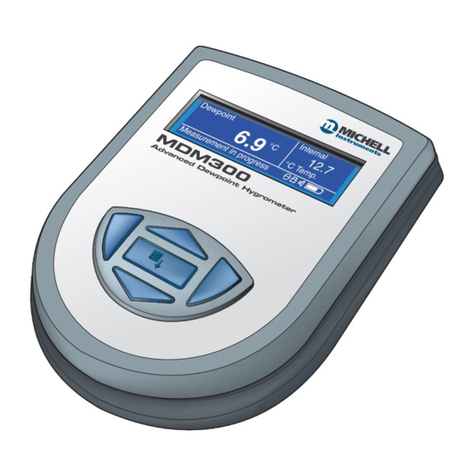
PST
PST MICHELL Instruments MDM300 User manual

PST
PST MICHELL Instruments MDM25 User manual
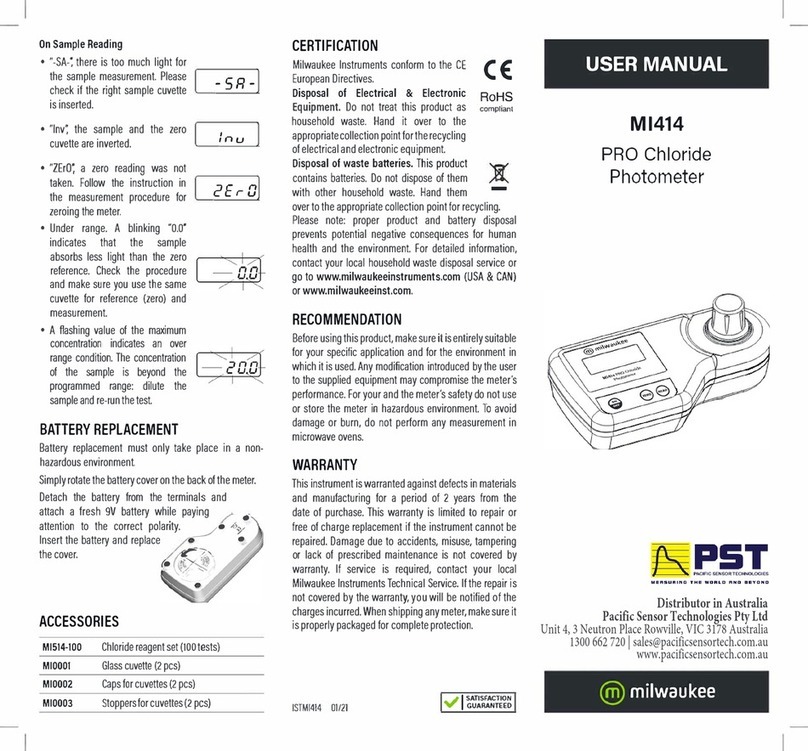
PST
PST MI414 User manual

PST
PST Center 252 User manual
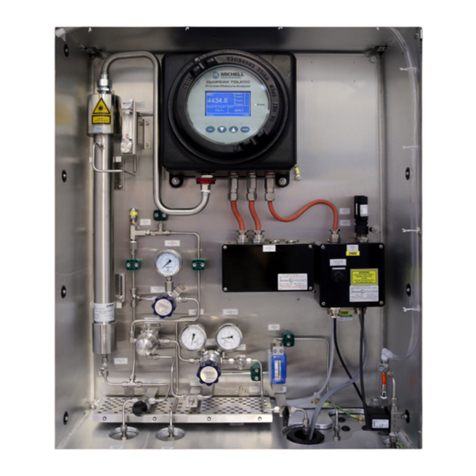
PST
PST Michell Instruments TDL600 User manual

PST
PST Michell Instruments S8000 -100 User manual

PST
PST SDK User manual

PST
PST MICHELL Instruments MDM300 User manual

PST
PST Comet Commeter D4130 User manual


